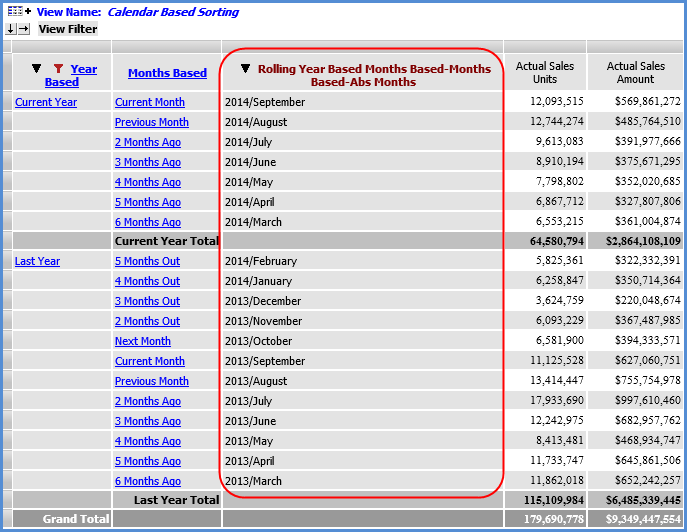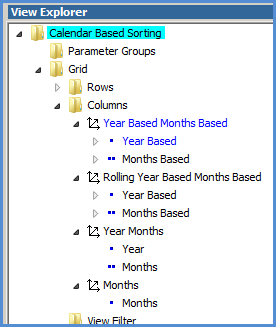
Calendar based objects are objects related to time, which are time hierarchies and their levels. Examples of time hierarchies and levels are Year Based Months Based, Rolling Year Based Months Based, Year Months, and Months. Sorting on calendar based objects is based on their calendar order. By default, the objects are displayed in order of oldest to most current. You can apply a descending sort to arrange objects from most current to oldest. To return the order to the default sequence, either apply an ascending sort or remove the sort all together. Sorting acts the same whether you sort the time member's value or attribute relationship.
A few examples follow.

The Year Months hierarchy is on columns and Months hierarchy is on rows in the following view. No sorting has been applied yet.
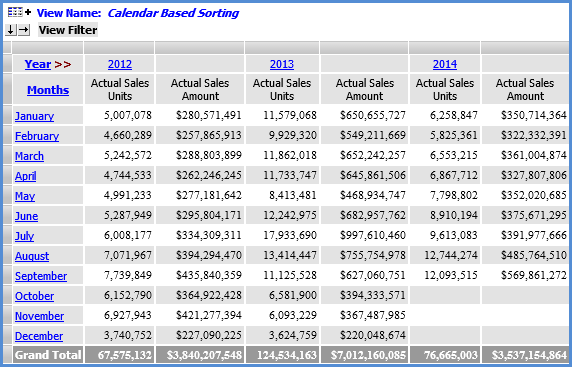
A descending sort is applied to the Year level on columns, changing the order from 2014 to 2012. A descending sort could be applied to Months on rows too, if needed, and that would change the order from December to January. In this case, the order has been left at the default of January to December.
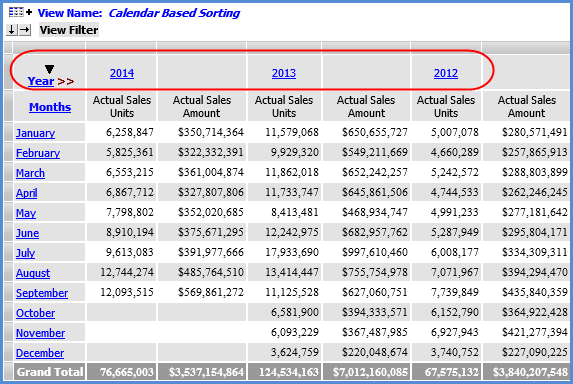
There are two levels from the Year Months hierarchy showing in this view. No sorting has been applied yet. The Year level has been filtered to display the years 2012 through 2014.
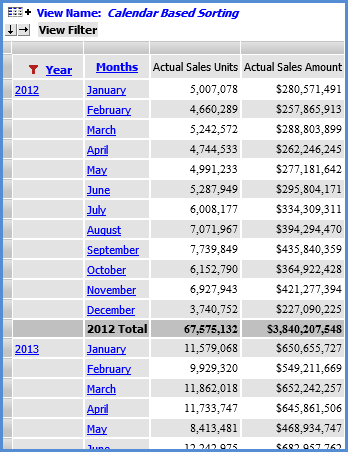
A descending sort on Months changes the order of months for each year from the most current of December back to the oldest month of January.
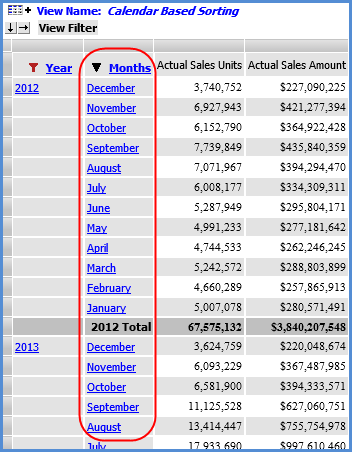
A descending sort on Year changes the order of years to the most current of 2014 to the oldest year, which is 2012. The current month for 2014 is September, and that is why the months of December, November, and October do not have any data yet.
Note: For period based views that use time hierarchies, it is recommended that you set the Relationship Filter and Empty Filter properties to No for the axis where the time hierarchies are used. In this example, both properties were set to No for rows. This will ensure that all periods will display in the view, even those for which no data exists. For example, if both properties had been set to Yes for the rows in this view, then the rows for December through October of 2010 would not have displayed.
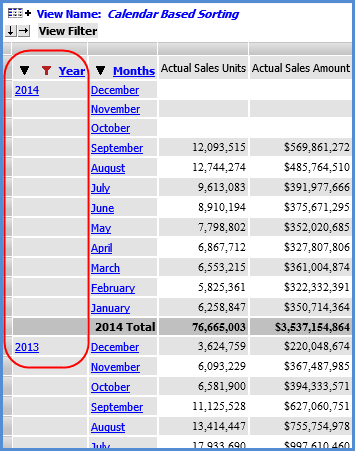
The next view has the Year Based Weeks Based hierarchy on rows. The first level, Year Based, is displayed and it is sorted in ascending order. The oldest year of 3 Years Ago shows first.

This view has the Rolling Year Based Months Based hierarchy on rows. Both the Year Based and Months Based levels are displayed. There is already a descending sort on the first level.
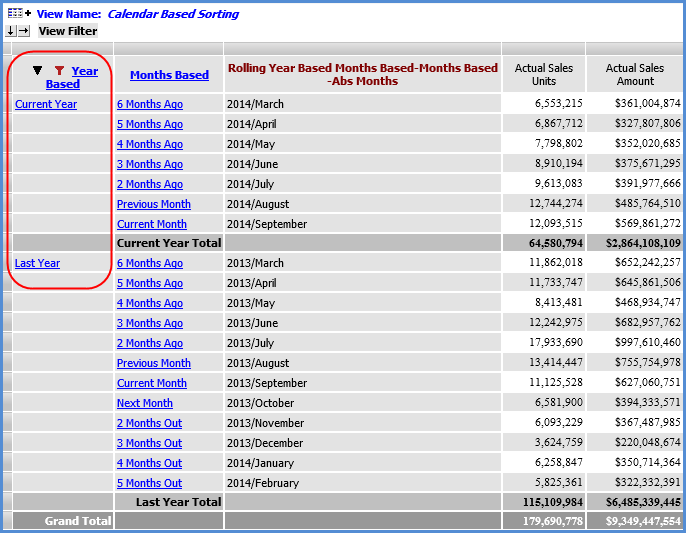
A descending sort is applied to the attribute relationship for the Months Based level. This arranges the Months members within each year from the most current to the oldest month.
